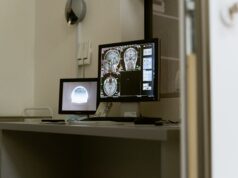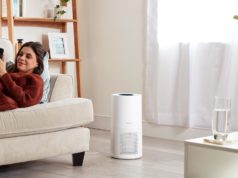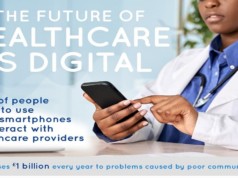The healthcare model has been changing in the US, from being centered on the hospital to now being centered on the patient. Healthcare increasingly wants to treat the patient as a consumer with choices. Technology is helping to bring the healthcare to the patient instead of asking the patient to go to where the healthcare is.
The US healthcare market was a $3.8 trillion business in 2019, and it’s projected to expand to almost double that by 2028, as the population continues to age. Rising demand is being aided by smaller facilities such as urgent cares and stand-alone emergency centers that distribute the healthcare industry across more nimble segments that offer convenience and easier access.
Technology, too, is playing a great role in offering patients smaller and more convenient bites of healthcare in their own homes. As an aging population chooses to age in place, and as the pandemic accelerated home delivery to a new level of normalcy, the idea is growing of having healthcare come to the home instead of the home dweller going to healthcare.
Distributed Healthcare
The new distributed model of healthcare has not only a larger geographic reach but also across more medical specializations. People can find affordable non-emergency or routine care outside of a hospital. We see this when mobile units bring aspects of care like dialysis to poorly-served rural areas.
We see more segmentation as vaccinations and medications are dispensed by pharmacies and big-box stores. The hospital is now supplemented by small stand-alone emergency rooms at the crisis end, and urgent care facilities at the primary-physician and routine treatment end.
Technology steps in with telehealth and video conference calls, still in the relatively new stages, but with great promise for connecting physician and patient without anyone having to go anywhere. And at the very individual level, today’s new patient can now wear or carry around smart devices with medical functionality.
Telehealth Empowers Doctors and Patients
Telehealth services remove many barriers for patients seeking medical care. With today’s busy schedules, people may not be able to sacrifice half a day at the hospital, but they can often squeeze in a one-hour video conference with their doctor. And especially since the pandemic, renewed concern over infection makes it an easy sell to avoid a crowded hospital.
Telehealth and telemedicine are especially welcome in rural areas where hospital facilities may be far away. Teleconferencing can even be useful for nursing aides to help caregivers learn how to operate their relative’s home care equipment. And patients can troubleshoot medical equipment directly with the manufacturer’s customer service representative.
Digital healthcare also helps medical professionals do more and reach more patients. Doctors can discuss prescription refills by a quick video call, which saves in-person time slots for more urgent cases. Psychiatrists may offer valuable mental health services to people who lack the time and energy to come down to the clinic. Rehabilitation specialists like physical therapists can guide clients through strengthening exercises by video. All of this expands the reach and effectiveness of medical services.
Smart Tech and Digital Health
Remote services are more realistic now with the digitization of our world and of the medical world. Prevalent high-speed internet, and cybersecurity measures that keep patients’ electronic health records (EHR) private, are crucial parts of the infrastructure.
Adoption of the EHR is almost universal throughout the US now. It needs to be accessible in real time, with providers delivering healthcare in different locations. Especially as seniors age at home and family members become home caregivers, or create businesses to deliver home care, it becomes crucial for the EHR to reflect changes in real time.
Hospital patient portals online are becoming increasingly friendly and customizable to the individual. Some are geared to answer questions or connect the patient to further services. The online platforms are complemented with portable and wearable devices that can monitor a person’s biometrics, manage complex medication schedules, update a medical chart in real time, and adjust medication.
Wearable devices have long existed for medical alerts, increasingly becoming adept at detecting falls and contacting emergency services. Apps like hearWHO, developed by the World Health Organization, act as a hearing loss screener. And wearable location trackers allow caregivers to find disoriented seniors who have wandered off – increasingly important as the US faces a crisis-level shortage of home health caregivers.
One exciting frontier for smart tech is the ongoing development of artificial intelligence for medical applications. Silicon Valley is deep in health service AI, which might operate similar to virtual assistants like Alexa or Siri. On the patient’s side, these AIs could educate them on what to expect from an upcoming surgery or help them schedule appointments. For doctors, the programs might comb through medical information and flag possible disorders. They could also warn about human error, like recommending the wrong dosage.
Hospitals remain the places with multi-million dollar diagnostic machines and patient access to specialists. But digital healthcare can increasingly bring sophisticated and comprehensive healthcare options straight into patients’ homes and their local communities.












